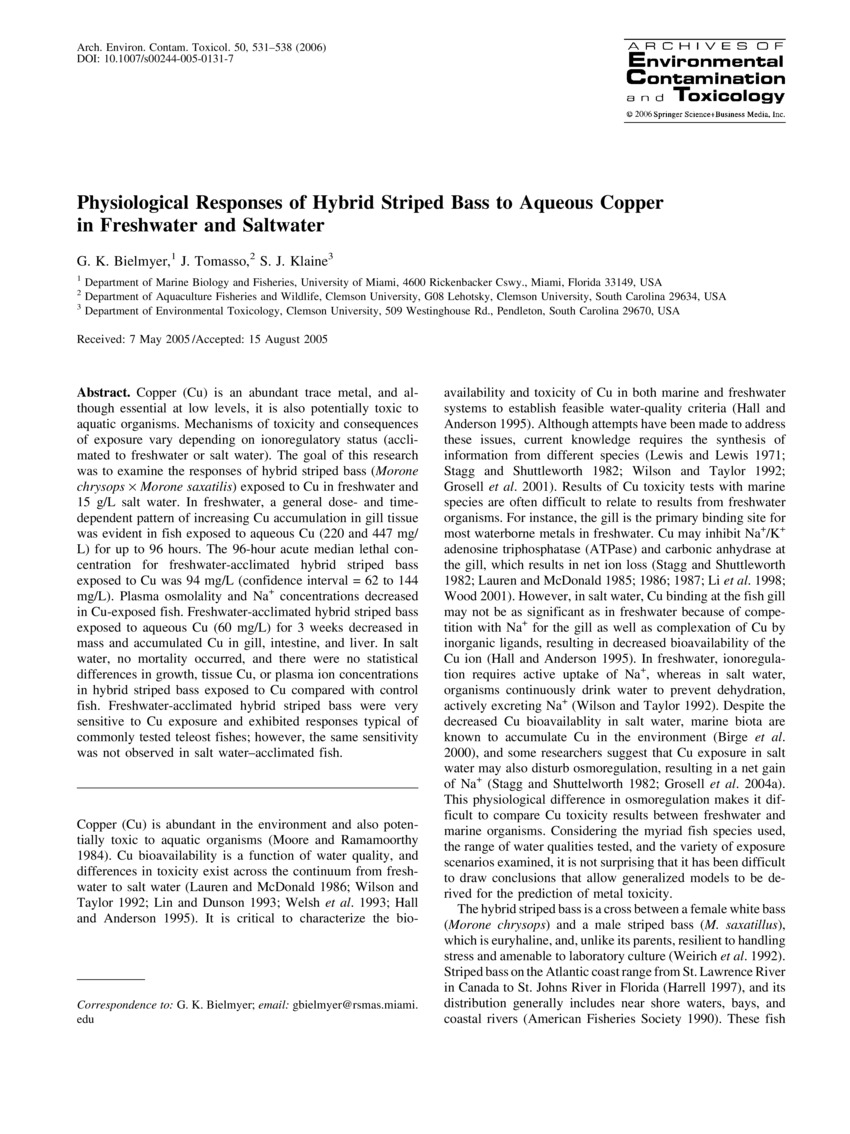Journal Article
AccessPhysiological Responses of Hybrid Striped Bass to Aqueous Copper in Freshwater and Saltwater
Copper (Cu) is an abundant trace metal, and although essential at low levels, it is also potentially toxic to aquatic organisms. Mechanisms of toxicity and consequences of exposure vary depending on ionoregulatory status (acclimated to freshwater or salt water). The goal of this research was to examine the responses of hybrid striped bass (Morone chrysops × Morone saxatilis) exposed to Cu in freshwater and 15 g/L salt water. In freshwater, a general dose- and time-dependent pattern of increasing Cu accumulation in gill tissue was evident in fish exposed to aqueous Cu (220 and 447 mg/L) for up to 96 hours. The 96-hour acute median lethal concentration for freshwater-acclimated hybrid striped bass exposed to Cu was 94 mg/L (confidence interval = 62 to 144 mg/L). Plasma osmolality and Na+ concentrations decreased in Cu-exposed fish. Freshwater-acclimated hybrid striped bass exposed to aqueous Cu (60 mg/L) for 3 weeks decreased in mass and accumulated Cu in gill, intestine, and liver. In salt water, no mortality occurred, and there were no statistical differences in growth, tissue Cu, or plasma ion concentrations in hybrid striped bass exposed to Cu compared with control fish. Freshwater-acclimated hybrid striped bass were very sensitive to Cu exposure and exhibited responses typical of commonly tested teleost fishes; however, the same sensitivity was not observed in salt water–acclimated fish.
Publisher - Springer
Subjects - Chemical, Copper; Fish, Striped Bass; Water, Fresh; Water, Marine
Citation: Bielmyer GK, Tomasso JR, Klaine SJ. 2006. Physiological Responses of Hybrid Striped Bass to Aqueous Copper in Freshwater and Saltwater. Arch. Environ. Contam. Toxicol.; 50(4):531-538
